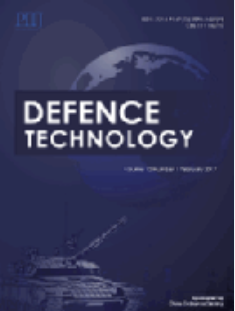One-pot synthesis of PDDA-mediated CuO-functionalized activated carbon fabric for sarin detoxification with enhanced strength and permeability for NBC protective clothing
IF 5
Q1 ENGINEERING, MULTIDISCIPLINARY
引用次数: 0
Abstract
Chemical warfare agents (CWAs) are extremely lethal substances used in warfare and terrorism, capable of causing permanent damage even in small doses, despite medical intervention. Therefore, detection, protection, and detoxification of CWAs are vital for the safety of first responders, military personnel, and civilians, driving significant research in this area. Herein, we designed and synthesized a poly(diallyldimethylammonium chloride) (PDDA) mediated cupric oxide (CuO) functionalized activated carbon fabric (ACF), termed ACF@PDDA-CuO, as an adsorbent filter material for self-detoxifying chemical protective clothing. PDDA, a positively charged polyelectrolyte, effectively binds in-situ synthesized CuO to the negatively charged ACF surface, serving as a suitable binder. This study demonstrates the synergistic effects of PDDA-CuO functionalization on ACF, where PDDA treatment enhanced mechanical and comfort properties, and CuO crystal growth significantly improved detoxification efficacy against the CWA Nerve Agent Sarin. Comprehensive analyses, including FTIR, BET surface area analysis, SEM, EDS, TEM, STEM, TGA, XPS, and XRD, confirmed the uniform deposition of CuO and PDDA on the ACF surface. The Cu content on ACF@PDDA-CuO samples was measured via iodometric titration. The materials were evaluated for tensile strength, air permeability, water vapor permeability, nerve agent (Sarin) detoxification, and blister agent (Sulfur Mustard) breakthrough time to assess their applicability for protective clothing. The optimized PDDA-CuO on ACF detoxified 82.04% of Sarin within 18 h, compared to 25.22% by ACF alone, and enhanced tensile strength by 23.67%, air permeability by 24.63%, and water vapor permeability by 3.94%, while maintaining protection against Sulfur Mustard for 24 h. These findings indicate that ACF@PDDA-CuO is a promising candidate for CWA protective clothing, offering robust protection with enhanced comfort.

一锅合成ppdda介导的高强度、高透气性磺胺吡啶(cuo)功能化活性炭织物
化学战剂是战争和恐怖主义中使用的极其致命的物质,即使是小剂量,即使有医疗干预,也能造成永久性损害。因此,CWAs的检测、保护和解毒对急救人员、军事人员和平民的安全至关重要,推动了这一领域的重大研究。在此,我们设计并合成了一种聚二烯基二甲基氯化铵(PDDA)介导的氧化铜(CuO)功能化活性炭织物(ACF),称为ACF@PDDA-CuO,作为自解毒化学防护服的吸附过滤材料。PDDA是一种带正电的聚电解质,可以将原位合成的CuO有效地结合到带负电的ACF表面,作为一种合适的粘合剂。本研究证明了PDDA-CuO功能化对ACF的协同作用,其中PDDA处理增强了机械和舒适性能,CuO晶体生长显著提高了对CWA神经毒剂沙林的解毒功效。综合分析,包括FTIR, BET表面积分析,SEM, EDS, TEM, STEM, TGA, XPS和XRD,证实了CuO和PDDA在ACF表面的均匀沉积。采用碘滴定法测定ACF@PDDA-CuO样品中的Cu含量。通过对材料的抗拉强度、透气性、透气性、神经毒剂(沙林)解毒能力、泡剂(硫芥)突破时间等进行评价,评价其作为防护服的适用性。优化后的pda - cuo在ACF上的解毒率为82.04%,而ACF单独解毒率为25.22%,抗拉强度提高了23.67%,透气性提高了24.63%,水蒸气渗透率提高了3.94%,同时对芥子气的防护效果保持了24 h。这些结果表明ACF@PDDA-CuO是一种很有希望的CWA防护服的候选材料,提供了强大的防护效果,增强了舒适性。
本文章由计算机程序翻译,如有差异,请以英文原文为准。
求助全文
约1分钟内获得全文
求助全文
来源期刊

Defence Technology(防务技术)
Mechanical Engineering, Control and Systems Engineering, Industrial and Manufacturing Engineering
CiteScore
8.70
自引率
0.00%
发文量
728
审稿时长
25 days
期刊介绍:
Defence Technology, a peer reviewed journal, is published monthly and aims to become the best international academic exchange platform for the research related to defence technology. It publishes original research papers having direct bearing on defence, with a balanced coverage on analytical, experimental, numerical simulation and applied investigations. It covers various disciplines of science, technology and engineering.
 求助内容:
求助内容: 应助结果提醒方式:
应助结果提醒方式:


